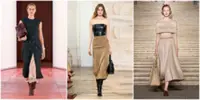Diane Von Furstenberg attends the opening night premiere of 'Diane Von Furstenberg: Woman In Charge' during the 2024 Tribeca Festival in New York City. Photo: AFP
Diane Von Furstenberg’s friends like to tease that, had she been on the cinematic Titanic ship, she would have found a way to hoist up Jack from the freezing water onto that wooden door.
Three days later, Jack in tow, she would have sashayed into a New York dinner party wearing that 56-carat blue diamond necklace.





